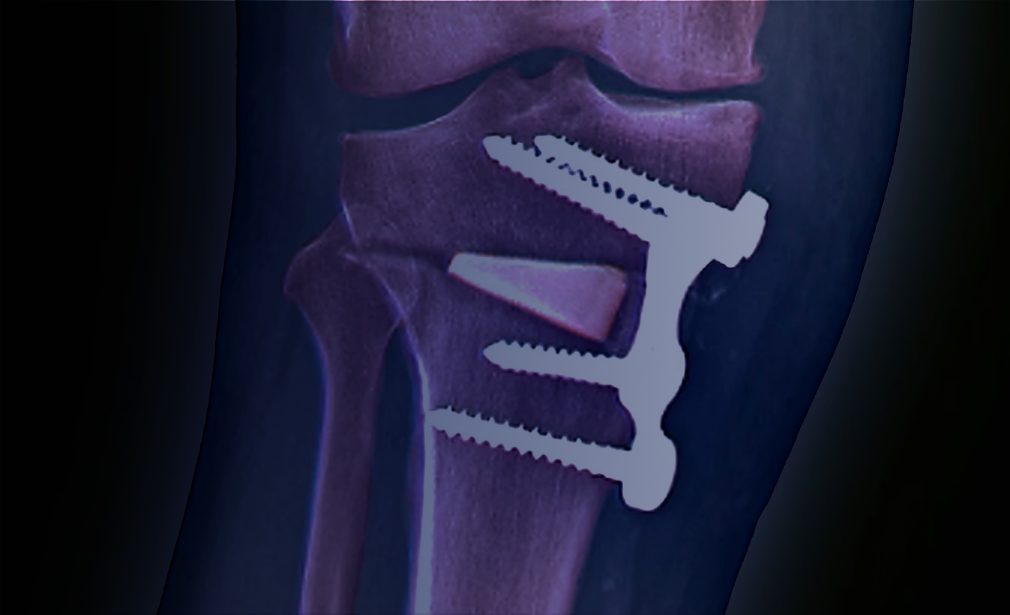Knee realignment surgery, or osteotomy, is a procedure where the bones of the leg (usually the tibia or femur) are cut and repositioned to shift weight away from a damaged part of the knee joint. It’s commonly done to treat early-stage arthritis or knee deformities like bow legs (varus) or knock knees (valgus).
High Tibial Osteotomy is a knee realignment surgery where the upper part of the shin bone (tibia) is cut and repositioned to shift the body’s weight away from the damaged part of the knee joint—usually the medial (inner) side. It is commonly used to treat early-stage osteoarthritis in younger, active patients with bow-legged (varus) alignment. The Symptoms of High Tibial Osteotomy (HTO) are
- Pain on the Inner (medial) side of the knee
- Bow-legged appearance of the legs
- Worsening pain with standing or walking
- Difficulty in walking long distances or climbing stairs
- Improvement of pain when sitting or resting
- Stiffness or reduced range of motion in the knee
- Localized swelling on the inner side of the knee
- Younger, active patients (<60 years) with early arthritis
Distal Femoral Osteotomy is a knee realignment surgery that involves cutting and reshaping the lower part of the femur (thigh bone) to correct valgus deformity (knock-knees). It helps shift weight away from the damaged lateral (outer) compartment of the knee.It’s often used for young, active patients with early-stage lateral knee arthritis or deformity. The common symptoms of Distal Femoral Osteotomy (DFO) are
- Pain on the Outer (lateral) side of the knee
- Knock-knee appearance (knees angle inward)
- Lateral knee pain during activity like walking or running
- Difficulty squatting or kneeling
- Swelling and tenderness on the outer knee
- Instability or imbalance while walking
- Decreased ability to bear weight on affected side
- Younger patients with good range of motion and early joint damage
Frequently asked questions
It’s a procedure (osteotomy) where the leg bone is cut and realigned to shift weight away from the damaged part of the knee joint, reducing pain and slowing joint damage.
– Pain relief
– Improved knee function
– Delay or avoidance of total knee replacement
– Preservation of natural knee joint
Full recovery usually takes 4–6 months. Weight-bearing is limited for 6–8 weeks, followed by physical therapy.
Pain is managed with anesthesia during surgery and medication afterward. Most patients report relief from arthritis pain after recovery.
Possibly. These procedures are often done to delay the need for total knee replacement by 5–10 years or more.
Yes, many patients return to low-impact sports and physical activity after recovery, though high-impact activities may be limited.
Success rates are high—80–90% of patients experience significant pain relief and improved function, especially when performed at the right stage.


